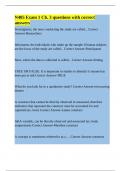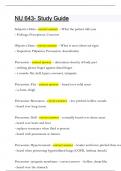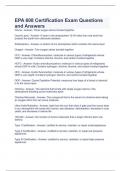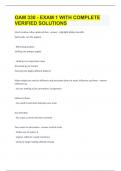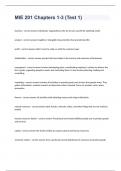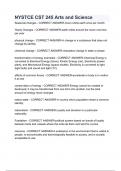Exam (elaborations)
CFA ESG - Chapter 8Exam Questions & Answers 100% Correct!
- Course
- Institution
What is seen as one of the most exciting yet least developed areas of ESG integration? - ANSWERSESG integration into informing and shaping strategic asset allocation. Why might ESG integration at the asset allocation level be redundant? - ANSWERSDue to the misalignment between investors' traditi...
[Show more]





